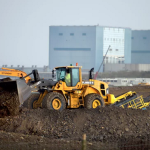Why is Hinkley C encountering uncertainty
The UK’s relationship with China, now the worlds second largest economy is thought to be at an ‘historic juncture’ owing to the Hinkley saga. The Prime Minister informed the French President last week the she required additional time prior to concluding her decision. There has been increasing controversy over questioning the involvement from Chinese companies involved in their 33.5% share of the deal. It has been highlighted that MI5 have been regularly participating in dialogue regarding Hinkley to whom have suggested concerns with China, voicing that China’s very own intelligent services “work agains UK interests both at home and abroad” While there has been suggestions thrown around that the Chinese companies could incorporate weaknesses into the computer systems which would enable them to effectively have the potential to shut down the UK’s energy production. Other glowing concerns include permitting Chinese companies to construct and operate a new nuclear project in Bradwell, Essex, of which the UK government has previously issued a gentleman's word on. The controversy surrounding these projects involve the authorisation of Chinese owned and operated technology.
There is also added concerns that EDF will not have Hinkley Point C build and operational, generating electricity by it’s forecast date of 2025. On top of this there has been a similar project proposed in France which has already been put back six years including over budgeting by a whopping £7billion. While ministers remain confidant that the project will still go ahead it’s understandable why newly electric Prime Minister Theresa Mays is taking time to thoroughly scrutinise the project. It’s important for the UK to send out a strong message that Britain is well and truly open for business however sensitive projects that are so tightly involved with national infrastructure particularly ones that involve national security should perhaps remain in house for every country.
However understanding what logic it would entail for the attraction of Chinese owners not to assemble the plant as efficiently as it could be or to even use hidden features within the plant in order to lever any potential future disputes. Surely they would lose any return from their enormous investment yet lock the door on any future UK investments. After all they are supposedly using this project as a showcase to the rest of the world whom are potential clients and what better place to do this than the UK. Nevertheless Theresa Mays governments decision to eject Hinkley Point C should be based on more than national security.
More economic low carbon technologies currently available
Offshore wind farms appear to be following a similar trend to what we have seen very recently with solar PV technology. Plunging costs, advances in installation technology and increasing reliability factors has seen offshore wind farms rocket in construction. During the course of the last 3 years the UK has seen a rapid reduction in cost by as much as 40%. Industry and government experts anticipate that by 2025 offshore wind will be as competitive as the latest developments in new gas generation, which is priced at around £85 per MWh (megawatt hour).
Only very recently the Dutch constructed a 700MW offshore wind farm and while regulations are possibly less restrictive than in the UK, the development is expected to generate electricity at approximately £80 per MWh. A recent unpublished investigation reported by the energy department highlighted that by 2025 (the same date as Hinkley is forecast to be operational) wind and solar is expected to plunge even further, equating to just £50 - £75 per MWh which is a stark contrast to the Hinkley Point C project which is forecast to generate electricity at £92.50 per MWh. Since the Netherlands wind farms distance is a mere 75 miles from UK waters and with almost identical conditions in wind velocity, distance from ports and seabed depth, it would appear that if the Dutch can intelligently cut costs then geographic conditions raises evidence that it can be replicated and achieved in the UK too. There are currently 2200 wind turbines operating or under construction amounting to just 1% of Britain’s ocean. The UK posses an extensive source of reliable and clean energy, the national grid calculates that nearly 50% of our energy demand has the potential to be supplied through wind farms located throughout our waters by 2030.
On the condition that Theresa Mays government decides to eject Hinkley Point C then the decision should not solely be weighed upon the balance of national security but due to a result of more attractive alternatives which provide greater efficiency, value and importantly safety. It is also worth noting that the energy project is so untested that there is not one currently in service anywhere in the world. If that isn’t setting alarm bells ringing then I am unsure what will, generally the UK chooses to opt for projects of this stature which are already operational somewhere in the world, such as the disputable fracking projects and so forth. The only direction to support a home grown energy strategy is scraping colossal Hinkley sized programs and moving towards renewable energy on a grand scale whilst incorporating smaller scale nuclear plants that Rolls Royce has capacity to construct.


